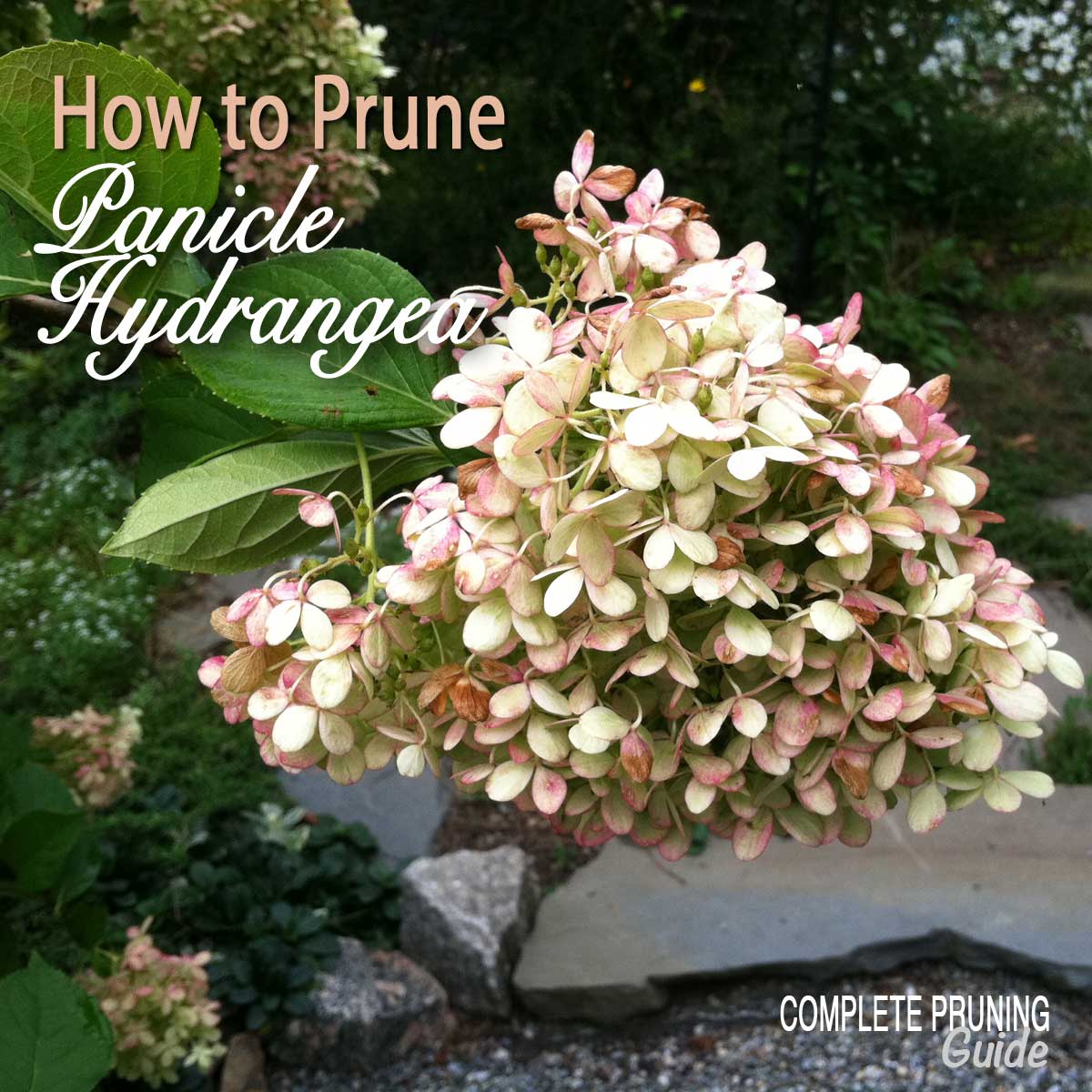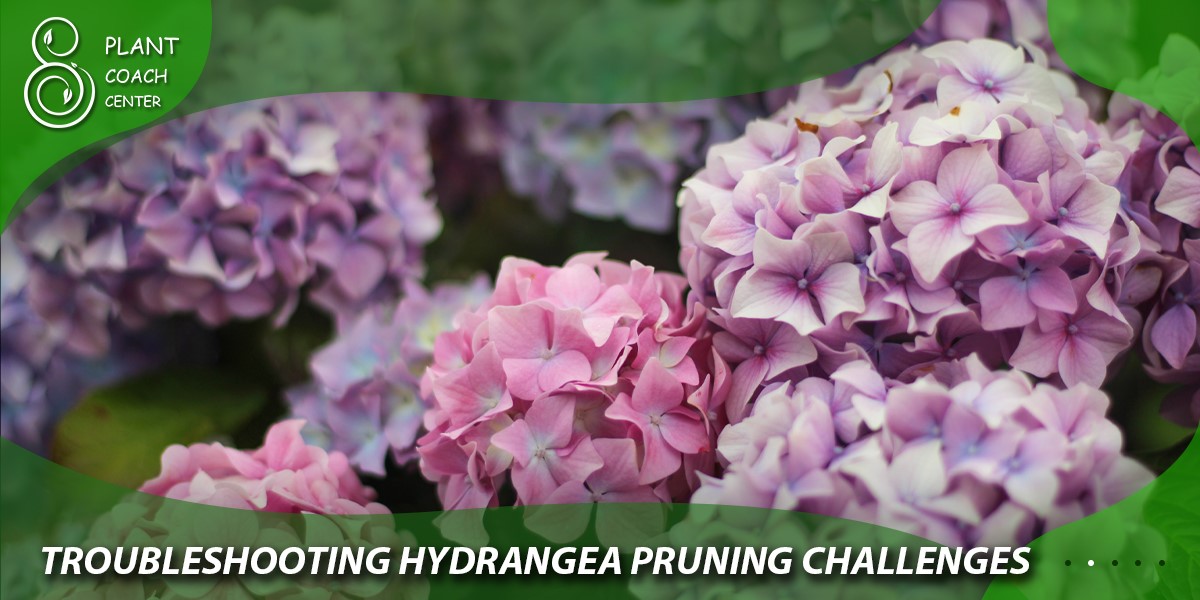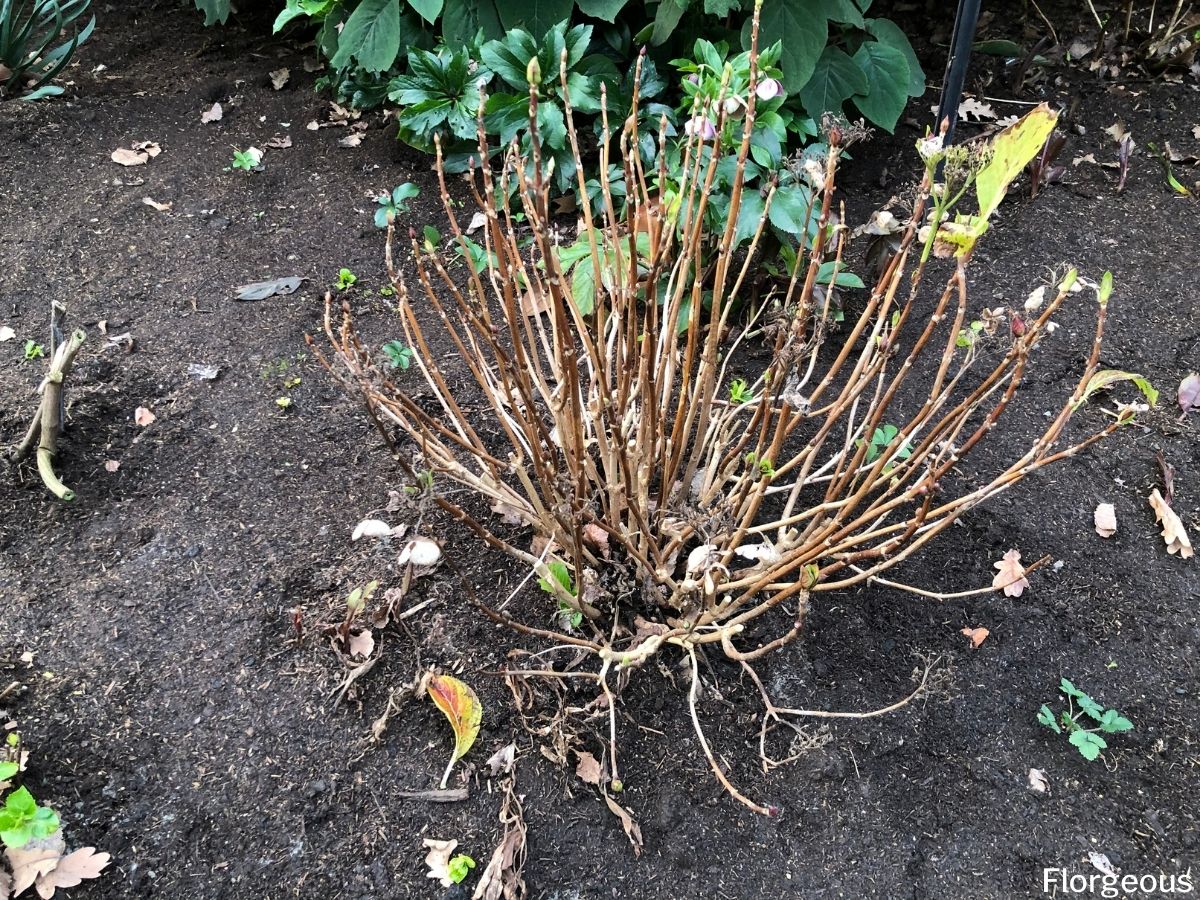Understanding Hydrangea Growth Patterns: The Key to Successful Pruning
Hydrangeas are popular flowering shrubs known for their stunning blooms and versatility in garden design. However, to achieve optimal blooms, it’s essential to understand how hydrangeas grow and produce flowers. Hydrangeas can be broadly classified into three main types: bigleaf, panicle, and smooth. Each type has distinct growth patterns and pruning requirements.
Bigleaf hydrangeas (Hydrangea macrophylla) produce large, showy flowers on old wood, meaning that the flowers bloom on stems that grew the previous year. This type of hydrangea requires careful pruning to avoid cutting off the flower buds. Panicle hydrangeas (Hydrangea paniculata) and smooth hydrangeas (Hydrangea arborescens) produce flowers on new wood, meaning that the flowers bloom on stems that grew during the current year. These types of hydrangeas can be pruned more aggressively, but still require careful attention to promote healthy growth and blooms.
Understanding the growth patterns of hydrangeas is crucial for determining the best time to trim them. Pruning at the wrong time can reduce or eliminate blooms, while pruning at the right time can promote healthy growth and encourage optimal blooming. The best time to trim hydrangeas depends on the type of hydrangea and its growth patterns. For example, bigleaf hydrangeas should be pruned immediately after blooming, while panicle and smooth hydrangeas can be pruned in late winter or early spring.
By understanding how hydrangeas grow and produce flowers, gardeners can develop a pruning strategy that promotes healthy growth and optimal blooms. This knowledge is essential for achieving the best results from pruning and for enjoying the beautiful blooms that hydrangeas have to offer.
When to Prune Hydrangeas: Timing is Everything
Pruning hydrangeas at the right time is crucial for promoting healthy growth and optimal blooms. Pruning at the wrong time can reduce or eliminate blooms, so it’s essential to understand the best time to trim hydrangeas. The timing of pruning depends on the type of hydrangea and its growth patterns.
For bigleaf hydrangeas, the best time to prune is immediately after blooming. This allows the plant to put its energy into producing new growth and blooms for the next year. Pruning too early or too late can reduce or eliminate blooms, so it’s essential to prune at the right time.
Panicle and smooth hydrangeas, on the other hand, can be pruned in late winter or early spring. This allows the plant to put its energy into producing new growth and blooms for the current year. Pruning in late winter or early spring also helps to promote healthy growth and encourages the plant to produce more blooms.
Pruning in late winter or early spring also allows for new growth and blooms to emerge in the current year. This is because hydrangeas typically produce new growth in the spring, and pruning at this time helps to promote healthy growth and encourages the plant to produce more blooms.
It’s also important to note that pruning hydrangeas in the fall can be detrimental to the plant. This is because hydrangeas typically go dormant in the fall, and pruning at this time can cause the plant to become stressed and vulnerable to disease and pests.
By pruning hydrangeas at the right time, gardeners can promote healthy growth and optimal blooms. This requires an understanding of the plant’s growth patterns and the best time to trim hydrangeas. By following these guidelines, gardeners can enjoy beautiful blooms and a healthy, thriving plant.
How to Prune Hydrangeas for Maximum Blooms
Pruning hydrangeas is an essential step in promoting healthy growth and optimal blooms. To prune hydrangeas effectively, it’s essential to understand the basics of pruning and how to make clean cuts. Here’s a step-by-step guide on how to prune hydrangeas for maximum blooms:
Step 1: Remove Dead Stems – Start by removing any dead or damaged stems from the plant. This will help to promote healthy growth and prevent the spread of disease. Cut the dead stems back to the base of the plant, making sure to make a clean cut just above a growth node.
Step 2: Remove Suckers – Suckers are shoots that grow from the base of the plant and can take energy away from the rest of the plant. Remove any suckers that are growing from the base of the plant, cutting them back to the base of the stem.
Step 3: Shape the Plant – Once you’ve removed any dead or damaged stems and suckers, it’s time to shape the plant. Use pruning shears or loppers to cut back any stems that are growing outside of the plant’s natural shape. Make clean cuts just above a growth node, and avoid cutting too much of the plant at once.
Step 4: Thin Out the Plant – Thinning out the plant can help to promote healthy growth and increase blooms. Remove any stems that are growing inwards or crossing over other stems, and cut back any stems that are growing too long.
Step 5: Check for Pests and Diseases – Finally, check the plant for any pests or diseases that may be affecting its growth. Remove any infected or damaged stems, and treat the plant with insecticidal soap or fungicide if necessary.
By following these steps, you can prune your hydrangeas effectively and promote healthy growth and optimal blooms. Remember to always make clean cuts and avoid over-pruning, as this can damage the plant and reduce blooms.
Pruning Bigleaf Hydrangeas: Special Considerations
Bigleaf hydrangeas (Hydrangea macrophylla) are one of the most popular types of hydrangeas, known for their large, showy flowers. However, they require special pruning considerations to encourage repeat blooming. Unlike other types of hydrangeas, bigleaf hydrangeas produce flowers on old wood, meaning that the flowers bloom on stems that grew the previous year.
To prune bigleaf hydrangeas, it’s essential to prune immediately after blooming. This allows the plant to put its energy into producing new growth and blooms for the next year. Pruning too early or too late can reduce or eliminate blooms, so it’s crucial to prune at the right time.
When pruning bigleaf hydrangeas, remove any dead or damaged stems, and cut back any stems that are growing outside of the plant’s natural shape. Make clean cuts just above a growth node, and avoid cutting too much of the plant at once. It’s also essential to remove any weak or spindly growth, as this can take energy away from the rest of the plant.
One of the most common mistakes when pruning bigleaf hydrangeas is to prune too much of the plant. This can reduce or eliminate blooms, so it’s essential to prune carefully and only remove what is necessary. By pruning bigleaf hydrangeas immediately after blooming and removing any dead or damaged stems, you can encourage repeat blooming and promote healthy growth.
It’s also worth noting that bigleaf hydrangeas can be sensitive to over-pruning. If you prune too much of the plant, it can become stressed and vulnerable to disease and pests. To avoid this, prune only what is necessary, and make clean cuts just above a growth node.
By following these tips and pruning bigleaf hydrangeas at the right time, you can encourage repeat blooming and promote healthy growth. Remember to always make clean cuts and avoid over-pruning, as this can damage the plant and reduce blooms.
Pruning Panicle and Smooth Hydrangeas: A Different Approach
Panicle and smooth hydrangeas are two types of hydrangeas that require a different approach to pruning. Unlike bigleaf hydrangeas, which produce flowers on old wood, panicle and smooth hydrangeas produce flowers on new wood. This means that they can be pruned in late winter or early spring, without affecting the current year‘s blooms.
When pruning panicle and smooth hydrangeas, it’s essential to prune in late winter or early spring, before new growth begins. This allows the plant to put its energy into producing new growth and blooms for the current year. Pruning at this time also helps to promote healthy growth and encourages the plant to produce more blooms.
When pruning panicle and smooth hydrangeas, remove any dead or damaged stems, and cut back any stems that are growing outside of the plant’s natural shape. Make clean cuts just above a growth node, and avoid cutting too much of the plant at once. It’s also essential to remove any weak or spindly growth, as this can take energy away from the rest of the plant.
Panicle hydrangeas, in particular, can benefit from pruning in late winter or early spring. This allows the plant to produce more blooms and promotes healthy growth. Smooth hydrangeas, on the other hand, can be pruned in late winter or early spring, but may require more frequent pruning to maintain their shape and size.
By pruning panicle and smooth hydrangeas in late winter or early spring, you can promote healthy growth and encourage more blooms. Remember to always make clean cuts and avoid over-pruning, as this can damage the plant and reduce blooms.
It’s also worth noting that panicle and smooth hydrangeas can be pruned to maintain their shape and size. By pruning regularly, you can encourage the plant to grow in a compact shape or to encourage a more sprawling habit. This can be especially useful for gardeners who want to control the size and shape of their hydrangeas.
Common Pruning Mistakes to Avoid
Pruning hydrangeas can be a delicate process, and making mistakes can reduce or eliminate blooms. Here are some common pruning mistakes to avoid:
Over-pruning: One of the most common mistakes when pruning hydrangeas is to over-prune. This can reduce or eliminate blooms, as well as stress the plant. To avoid over-pruning, only remove what is necessary, and make clean cuts just above a growth node.
Pruning at the wrong time: Pruning hydrangeas at the wrong time can also reduce or eliminate blooms. For example, pruning bigleaf hydrangeas in the fall can reduce blooms the following year. To avoid this, prune hydrangeas at the right time, depending on the type of hydrangea.
Not making clean cuts: Not making clean cuts can damage the plant and reduce blooms. To avoid this, use sharp, clean pruning shears and loppers, and make clean cuts just above a growth node.
Pruning too much of the plant: Pruning too much of the plant can stress the plant and reduce blooms. To avoid this, only remove what is necessary, and make clean cuts just above a growth node.
Not removing dead or damaged stems: Not removing dead or damaged stems can reduce blooms and stress the plant. To avoid this, remove any dead or damaged stems, and make clean cuts just above a growth node.
By avoiding these common pruning mistakes, you can promote healthy growth and encourage more blooms. Remember to always make clean cuts and avoid over-pruning, as this can damage the plant and reduce blooms.
It’s also worth noting that pruning hydrangeas is an ongoing process, and regular pruning can help to promote healthy growth and encourage more blooms. By pruning regularly, you can control the shape and size of your hydrangeas, and encourage them to produce more blooms.
Pruning Tools and Techniques: What You Need to Know
Pruning hydrangeas requires the right tools and techniques to ensure that the plant is pruned correctly and safely. Here are some tips on what you need to know:
Pruning Shears: Pruning shears are the most essential tool for pruning hydrangeas. Look for sharp, clean pruning shears that are specifically designed for cutting through thick stems. Avoid using dull or rusty pruning shears, as they can damage the plant and spread disease.
Loppers: Loppers are long-handled pruning shears that are used for cutting through thicker stems. They are ideal for pruning larger hydrangea plants or for cutting through dead or damaged stems.
Pruning Saw: A pruning saw is a specialized saw that is designed for cutting through thick stems. It is ideal for pruning larger hydrangea plants or for cutting through dead or damaged stems.
Techniques: When pruning hydrangeas, it’s essential to use the right techniques to avoid damaging the plant. Here are some tips:
Make clean cuts: When pruning hydrangeas, make clean cuts just above a growth node. This will help the plant to heal quickly and reduce the risk of disease.
Don’t over-prune: Over-pruning can stress the plant and reduce blooms. Only remove what is necessary, and make clean cuts just above a growth node.
Prune at the right angle: When pruning hydrangeas, prune at a 45-degree angle. This will help the plant to heal quickly and reduce the risk of disease.
By using the right pruning tools and techniques, you can prune your hydrangeas safely and effectively. Remember to always make clean cuts and avoid over-pruning, as this can damage the plant and reduce blooms.
Pruning Hydrangeas for Shape and Size: Tips and Tricks
Pruning hydrangeas is not only essential for promoting healthy growth and blooms, but it can also be used to control the shape and size of the plant. Here are some tips and tricks on how to prune hydrangeas to achieve the desired shape and size:
Pruning for a Compact Shape: To prune hydrangeas for a compact shape, remove any stems that are growing outside of the plant’s natural shape. Cut back any stems that are growing too long, and remove any weak or spindly growth. This will help to maintain a compact shape and promote healthy growth.
Pruning for a More Sprawling Habit: To prune hydrangeas for a more sprawling habit, remove any stems that are growing too close together. Cut back any stems that are growing too long, and remove any weak or spindly growth. This will help to encourage a more sprawling habit and promote healthy growth.
Pruning for a Specific Shape: To prune hydrangeas for a specific shape, such as a ball or a cone, remove any stems that are growing outside of the desired shape. Cut back any stems that are growing too long, and remove any weak or spindly growth. This will help to maintain the desired shape and promote healthy growth.
Timing is Everything: When pruning hydrangeas for shape and size, timing is everything. Prune in late winter or early spring, before new growth begins. This will help to promote healthy growth and encourage the plant to produce more blooms.
Tools and Techniques: When pruning hydrangeas for shape and size, use the right tools and techniques. Use sharp, clean pruning shears and loppers, and make clean cuts just above a growth node. Avoid using dull or rusty pruning shears, as they can damage the plant and spread disease.
By following these tips and tricks, you can prune your hydrangeas to control shape and size, and promote healthy growth and blooms. Remember to always make clean cuts and avoid over-pruning, as this can damage the plant and reduce blooms.







